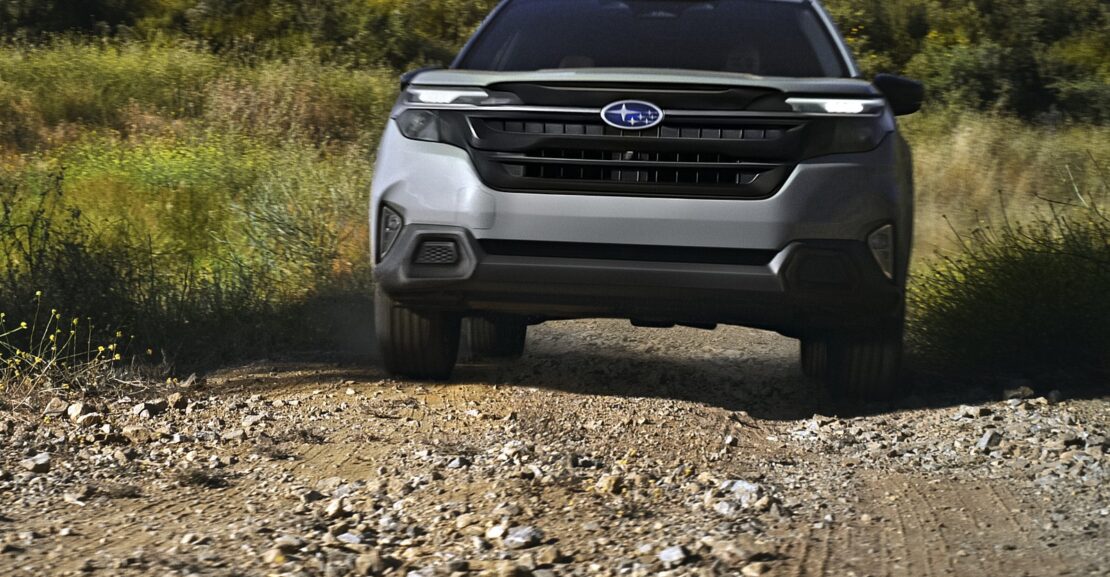For individuals in search of a car that performs exceptionally well in diverse weather conditions, Subaru is likely to rank prominently on their list. With the exception of the sporty BRZ sports car, all Subaru models come equipped with standard all-wheel-drive (AWD), and many offer enhanced ground clearance. The outcome is that drivers possess the capability and assurance to confront road conditions they might typically shy away from.
However, it’s worth noting that standard AWD does face constraints when confronted with particularly challenging travel circumstances. In such instances, Subaru’s X-Mode technology, readily available, steps in to provide additional traction, ensuring a safe and steady progression forward.
What is Subaru X-Mode?
To grasp the concept of Subaru’s X-Mode, it’s essential to first understand the fundamentals of all-wheel-drive (AWD). In simple terms, when sensors detect a loss of traction, the power from the engine—typically distributed to just two of a vehicle’s wheels—is redirected to the wheels with the most grip among the four.
Instead of the tires spinning fruitlessly, as often happens with 2-wheel drive, an AWD system channels power to a wheel or wheels that maintain traction, preventing the vehicle from getting stuck.
While this is undeniably advantageous, it may not always suffice to extricate a driver from challenging situations. This is precisely where Subaru’s X-Mode steps in. Essentially, X-Mode represents an advanced AWD system that automatically adjusts various vehicle components to optimize traction.
Subaru provides two versions of X-Mode. In 2021, the single-mode X-Mode system, featuring a Snow/Dirt setting, is accessible on all Ascent, Crosstrek, Forester, and Outback models equipped with a continuously variable transmission (CVT).
For those seeking even more capability, the dual-mode X-Mode, encompassing Snow/Dirt and Deep Snow/Mud settings, is an option available on the Crosstrek Sport, Forester Sport, and Outback Onyx Edition XT models.
How Does Subaru X-Mode Work?
Depending on which Subaru model you have, you activate X-Mode by pressing a button on the center console or tapping the infotainment touchscreen.
Single-mode X-Mode
In the single-mode iteration of X-Mode, the activation initiates a reduction in immediate throttle response, preventing excessive wheel spin and enhancing grip. Subsequently, the technology releases additional engine torque to sustain forward momentum. Additionally, X-Mode imposes restrictions on the transmission, opting for a lower gear ratio, and prompts the limited-slip differential to engage more promptly.
These automated interventions serve to limit wheel speed, ensuring that the available torque is delivered in a controlled fashion. It’s akin to navigating a dirt road from a complete standstill—full acceleration might result in wheel spin, but a gradual and measured application of the gas pedal allows the wheels to swiftly gain traction.
A notable inclusion in X-Mode is hill descent control. While commonly associated with four-wheel-drive (4WD) vehicles, this feature operates effectively at speeds of up to 12 mph. It empowers the driver to concentrate on steering, as the vehicle autonomously manages throttle and brake responses during the descent.
Dual-mode X-Mode
If you opt for a Subaru model equipped with dual-mode X-Mode, such as the Crosstrek Sport, Forester Sport, or Outback Onyx Edition XT, you’ll benefit from all the advanced technology we’ve just discussed, including the Deep Snow/Mud setting. This particular setting is designed for scenarios where additional wheel spin is actually desirable. In such situations, X-Mode’s objective is to sustain forward momentum by allowing the wheels to spin, effectively navigating through challenging conditions like deep snow or mud.
When Do I Use Subaru X-Mode?
It’s important to note that X-Mode has its limitations, as it deactivates at speeds exceeding 18 mph. Consequently, its usage is restricted to low-speed driving scenarios. The system proves most advantageous when navigating steep inclines or declines on surfaces with low traction, or when driving on icy terrains where maximizing traction is paramount.
The dual-mode variant of X-Mode, while equally beneficial in these low-speed situations, offers an additional advantage. In situations where extra wheel speed is required to power through thick snow or mud, choosing the dual-mode X-Mode becomes especially advantageous. This capability reduces the risk of coming to a halt and getting stuck in challenging off-road conditions.
Subaru has long been familiar with navigating challenging driving conditions, establishing a reputation for ensuring people reach their destinations regardless of the weather or circumstances. The incorporation of the company’s X-Mode technology further amplifies this capability, rendering Subaru’s lineup of crossover SUVs particularly attractive to individuals contending with frequent encounters with rain, snow, ice, and mud. In essence, Subaru’s commitment to robust, all-weather performance is underscored by innovations like X-Mode, making their vehicles a reliable choice for those who demand versatility and confidence in various driving scenarios.

